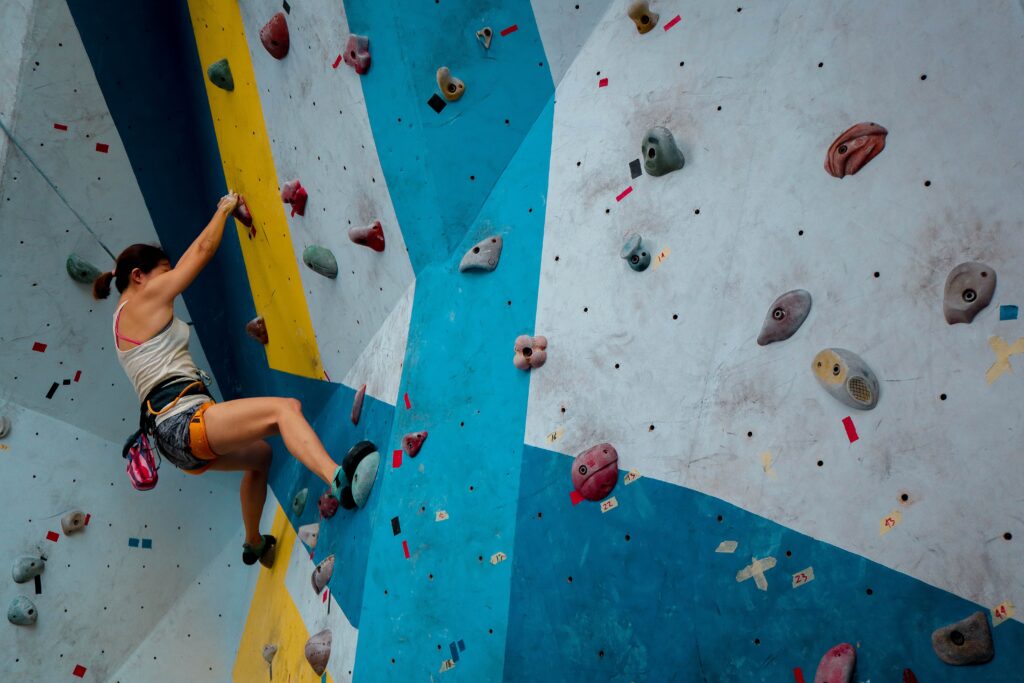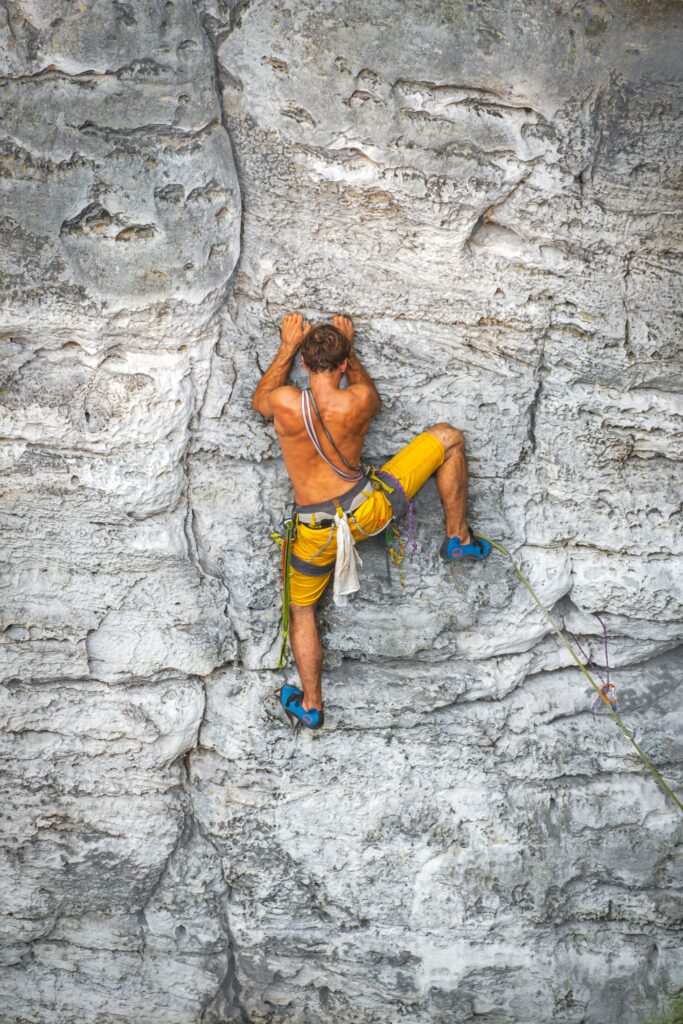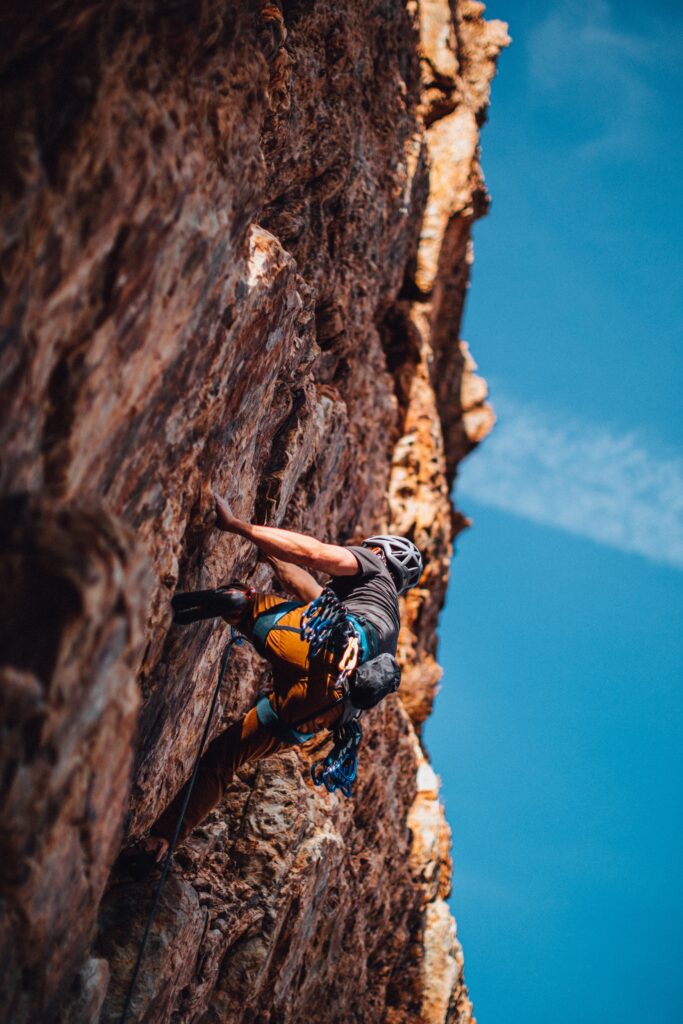If you’re an adventure enthusiast looking for a new challenge, you might be wondering if the picturesque landscapes of the Cotswolds offer any opportunities for rock climbing. Surprisingly, the rolling hills and charming villages hold some hidden treasures for climbers of all skill levels. In this article, we’ll explore the fascinating world of rock climbing in the Cotswolds, unraveling the possibilities and attractions that await intrepid climbers in this breathtaking region of England. So, grab your gear and get ready for an unforgettable climbing experience amidst the idyllic beauty of the Cotswolds! Yes, you definitely can! The Cotswolds, known for their picturesque landscapes and rolling hills, also offer plenty of opportunities for rock climbing enthusiasts. Whether you’re a seasoned climber looking for a challenge or a beginner eager to try out the sport, the Cotswolds have something for everyone. Let’s delve into the history of rock climbing in the area, explore the various climbing areas, discuss the climbing grades, and provide you with some vital information on safety precautions, access, and restrictions. We’ll also touch on the best time to go climbing, accommodation options, and other outdoor activities you can enjoy in the Cotswolds.

History of Rock Climbing in the Cotswolds
Rock climbing has been a popular outdoor activity in the Cotswolds for many years. Although the area may not boast towering cliffs like those found in some other regions, it offers unique challenges and a beauty all its own. Early climbing routes in the Cotswolds were mostly focused on natural rock features found on crags and escarpments. These routes were typically short and not very technical, making them suitable for beginners and those looking for a taste of outdoor climbing.
Development of Climbing in the Cotswolds
Over time, as the sport gained popularity, climbers began to develop the potential of the Cotswolds for more challenging routes. This involved creating new routes and extending existing ones to provide climbers with a greater variety of options. With the rise of sport climbing in the 20th century, the Cotswolds saw the establishment of bolted routes on cliffs and crags, offering climbers the chance to test their skills on routes with fixed protection.
Famous Climbers in the Cotswolds
The Cotswolds have been home to several talented climbers who have left their mark on the region. These climbers have not only achieved impressive feats themselves but have also contributed significantly to the development of the climbing scene in the Cotswolds. From establishing new routes to pushing the boundaries of what was considered possible, these climbers have inspired and influenced many others. Some notable climbers from the area include John Dunne, Johnny Dawes, and Niall Grimes.
Rock Climbing Areas in the Cotswolds
Now, let’s take a closer look at some of the popular rock climbing areas in the Cotswolds. Each of these areas has its unique characteristics and offers a range of climbing experiences, from bouldering to traditional and sport climbing.
Crickley Hill
Located near Cheltenham, Crickley Hill is a popular climbing spot in the Cotswolds. With its limestone crags and diverse range of climbs, it attracts climbers of all levels of experience. From steady slab climbs to more challenging overhangs, there’s something for everyone here.
Symonds Yat
Situated on the border between Herefordshire and Gloucestershire, Symonds Yat is a picturesque climbing destination offering stunning views of the River Wye. With its steep limestone cliffs, it provides climbers with a thrilling experience. From single-pitch sport routes to multi-pitch trad climbs, Symonds Yat has plenty to offer climbers of all abilities.
Wye Valley
The Wye Valley, located along the River Wye, offers a wide range of climbing opportunities. With its mix of limestone and sandstone cliffs, this area caters to climbers interested in both traditional and sport climbing. The variety of routes and the scenic surroundings make the Wye Valley a popular choice amongst climbers.
Cheddar Gorge
Cheddar Gorge, a limestone gorge in Somerset, is not only a popular tourist attraction but also a haven for climbers. With its towering cliffs and challenging routes, it provides a thrilling experience for climbers. From the iconic Cheddar Wall to the intricate E4 routes, there’s plenty to test your skill and nerve.

Climbing Grades in the Cotswolds
Climbing grades help climbers assess the difficulty of a route and plan their climbs accordingly. In the Cotswolds, you’ll come across three main grading systems: bouldering grades, sport climbing grades, and traditional climbing grades.
Bouldering
Bouldering is a form of climbing that involves climbing relatively short routes without the use of a rope. The difficulty of bouldering routes is graded on the Fontainebleau grading system, with grades ranging from 1 to 8a+. The Cotswolds offer a variety of bouldering opportunities, with problems suitable for climbers of all levels.
Sport Climbing
Sport climbing involves climbing routes with predetermined protection points, such as bolts. In the Cotswolds, sport climbs are graded using the French grading system, which uses a numeric scale from 4 to 9 for difficulty. The Cotswolds provide a range of sport climbing routes to suit climbers of different abilities.
Traditional Climbing
Traditional climbing, also known as trad climbing, involves placing protective gear, such as nuts and cams, as you ascend the route. Trad climbs in the Cotswolds are graded using the British trad grading system, which uses a dual system of adjectival grades (from Easy to Very Severe) and technical grades (from 1 to 5c). The Cotswolds offer a variety of trad climbs, with both single-pitch and multi-pitch options.
Climbing Facilities and Services
To support climbers in the Cotswolds, there are several facilities and services available.
Rock Climbing Clubs
Joining a rock climbing club is a great way to meet fellow climbers, learn from experienced climbers, and access club trips to various climbing locations. There are several rock climbing clubs in the Cotswolds that cater to climbers of all levels and interests. These clubs often organize regular meetups, training sessions, and social events.
Guided Climbing Tours
If you’re new to rock climbing or unfamiliar with the Cotswolds, booking a guided climbing tour can be a fantastic way to explore the area and receive professional guidance. Experienced guides can introduce you to the best climbing spots, offer valuable tips and techniques, and ensure your safety throughout the experience.
Climbing Gear Rental
If you don’t have your own climbing gear or are traveling from afar, renting climbing gear is a convenient option. Some climbing centers and outdoor gear shops in the Cotswolds offer gear rental services, allowing you to get all the necessary equipment for your climb without the hassle of bringing your own.

Popular Cotswold Climbing Routes
The Cotswolds offer a plethora of exciting and challenging climbing routes. Let’s explore some of the most popular ones:
Crickness Edge Traverse
The Crickley Edge Traverse is a classic bouldering route at Crickley Hill. It follows a horizontal line of holds along the edge, requiring good technique and strength. The traverse offers a range of difficulties, making it suitable for climbers of different skill levels.
The Devil’s Pulpit
The Devil’s Pulpit is a striking limestone cliff near Symonds Yat. It boasts a selection of challenging sport climbs, with routes that will test your stamina and technique. The stunning views of the River Wye from the top make this climb even more rewarding.
Wyndcliffe Quarry
Wyndcliffe Quarry, located in the Wye Valley, offers a mix of sport and trad climbs. The quarried limestone walls provide a unique climbing experience, with routes that cater to a range of abilities. From vertical face climbs to overhangs, Wyndcliffe Quarry has something for everyone.
Cheddar Wall
Cheddar Wall, situated in the iconic Cheddar Gorge, is a must-visit for climbers seeking a challenge. It is famous for its technical and demanding routes, with steep sections that test climbers’ strength and technique. Climbing on Cheddar Wall is an experience that will push your limits.
Symonds Yat Climbs
Symonds Yat is known for its impressive multi-pitch climbing routes. With routes like the classic “Original Route”, climbers can enjoy the thrill of climbing on beautiful limestone cliffs while taking in the breathtaking views of the River Wye. These climbs are ideal for those looking to push themselves and experience the joy of multi-pitch climbing.
Access and Restrictions
While the Cotswolds offer great opportunities for rock climbing, it’s important to be aware of access rights, conservation considerations, and potential access limitations.
Climbing Access Rights
In general, climbers in the Cotswolds have access to most crags and climbing areas. However, it is always important to be respectful of landowners and local communities. Be aware of any specific access agreements or restrictions for certain areas and follow the guidelines provided by local climbing organizations.
Conservation and Environmental Considerations
Climbers should prioritize environmental conservation and practice Leave No Trace principles when climbing in the Cotswolds. Avoid damaging vegetation and wildlife habitats, dispose of waste properly, and minimize your impact on the natural surroundings. By doing so, we can ensure the preservation of these beautiful climbing areas for future generations to enjoy.
Potential Access Limitations
While climbing access in the Cotswolds is generally unrestricted, certain areas may have temporary or permanent access limitations due to bird nesting seasons, conservation efforts, or land management decisions. Stay informed about any access restrictions by checking online guides, speaking to local climbing organizations, or contacting landowners directly.

Safety Precautions for Climbers
Safety should always be a top priority when rock climbing in the Cotswolds. Here are some essential safety precautions to keep in mind:
Use of Safety Equipment
Always wear appropriate climbing gear, including a helmet, harness, and rock shoes. Check your gear regularly for any signs of wear or damage. Additionally, use proper climbing ropes, carabiners, and other safety equipment. If you’re unsure about any aspect of your gear or techniques, seek advice from experienced climbers or professional instructors.
Checking Weather Conditions
Before heading out for a climb, check the weather forecast for the area. Adverse weather conditions, such as rain or high winds, can make climbing unsafe. Foggy or misty conditions may also affect visibility, so plan your climbs accordingly and be prepared to adjust your plans if necessary.
Learning Basic Climbing Techniques
If you’re new to rock climbing, it’s essential to learn and practice basic climbing techniques. Proper footwork, hand placement, and body positioning can significantly enhance your climbing ability and safety. Consider taking a climbing course or hiring an instructor to ensure you have a solid foundation of climbing skills.
Best Time to Go Rock Climbing in the Cotswolds
When planning your climbing trip to the Cotswolds, consider the following factors:
Seasonal Considerations
Spring and autumn are generally the best seasons for climbing in the Cotswolds. The temperatures are mild, and the weather tends to be more stable, providing good climbing conditions. Summer can be hot and humid, while winter brings colder temperatures and the possibility of icy or wet conditions, which may affect certain climbing routes.
Weather Factors
Check the weather conditions in advance, as heavy rainfall can make rock surfaces slippery and unsafe for climbing. Dry or cooler weather is generally more suitable for climbing, providing better grip and improving overall safety.
Crowd Levels
If you prefer a quieter climbing experience, it’s advisable to avoid peak times, such as weekends and school holidays. During these periods, popular climbing spots may become crowded, and you may have to wait for your turn on certain routes.

Accommodation Options for Climbers
When planning your rock climbing trip to the Cotswolds, you’ll find various accommodation options to suit your preferences and budget. Here are some popular choices:
Camping and Caravan Sites
If you enjoy the outdoors and prefer to stay close to nature, camping or staying at a caravan site is a great option. The Cotswolds offer numerous campsites that provide facilities such as showers, toilets, and cooking areas. Some sites even cater specifically to climbers, offering easy access to climbing areas.
Bunkhouses and Hostels
Bunkhouses and hostels provide a budget-friendly option for climbers. These accommodations often offer shared dormitory-style rooms or private rooms at affordable prices. They can be a great way to meet fellow climbers and exchange stories and tips.
Hotels and Bed & Breakfasts
For those seeking a more comfortable and luxurious stay, there are plenty of hotels and bed & breakfasts scattered throughout the Cotswolds. Enjoy a restful night’s sleep, indulge in a hearty breakfast, and relax after a day of climbing. These accommodations may also provide additional services such as gear storage or drying facilities.
Other Outdoor Activities in the Cotswolds
While rock climbing may be the main attraction for many visitors to the Cotswolds, the area also offers a range of other outdoor activities. Here are a few options to consider:
Hiking and Walking Trails
The Cotswolds are renowned for their stunning walking and hiking trails. Explore picturesque landscapes, charming villages, and historical sites as you venture along the Cotswold Way or one of the many other trails in the area. This is a fantastic way to appreciate the natural beauty of the Cotswolds and unwind after a day of climbing.
Cycling Routes
The Cotswolds provide a network of scenic cycling routes suitable for all levels of experience. Pedal through rolling countryside, past charming cottages, and along peaceful rivers. You can bring your own bike or rent one from one of the many cycling providers in the area.
Canoeing and Kayaking
The rivers in the Cotswolds offer excellent opportunities for water enthusiasts. Hire a canoe or kayak and paddle along the tranquil waters of the River Wye or River Thames. Immerse yourself in the serenity of the surroundings and observe the abundant wildlife as you glide along.
In conclusion, the Cotswolds are a fantastic destination for rock climbers of all levels. From its rich climbing history to the development of challenging routes, there’s no shortage of excitement in these scenic hills. With various climbing areas, diverse climbing grades, and numerous facilities and services available, the Cotswolds cater to climbers’ needs. Remember to prioritize safety, respect access rights, and consider environmental preservation. Whether you’re climbing the Crickley Edge Traverse, tackling the Devil’s Pulpit, or embarking on a multi-pitch adventure at Symonds Yat, the Cotswolds offer memorable experiences for climbers. So pack your gear, plan your trip, and get ready for an exhilarating adventure in this picturesque part of England.
